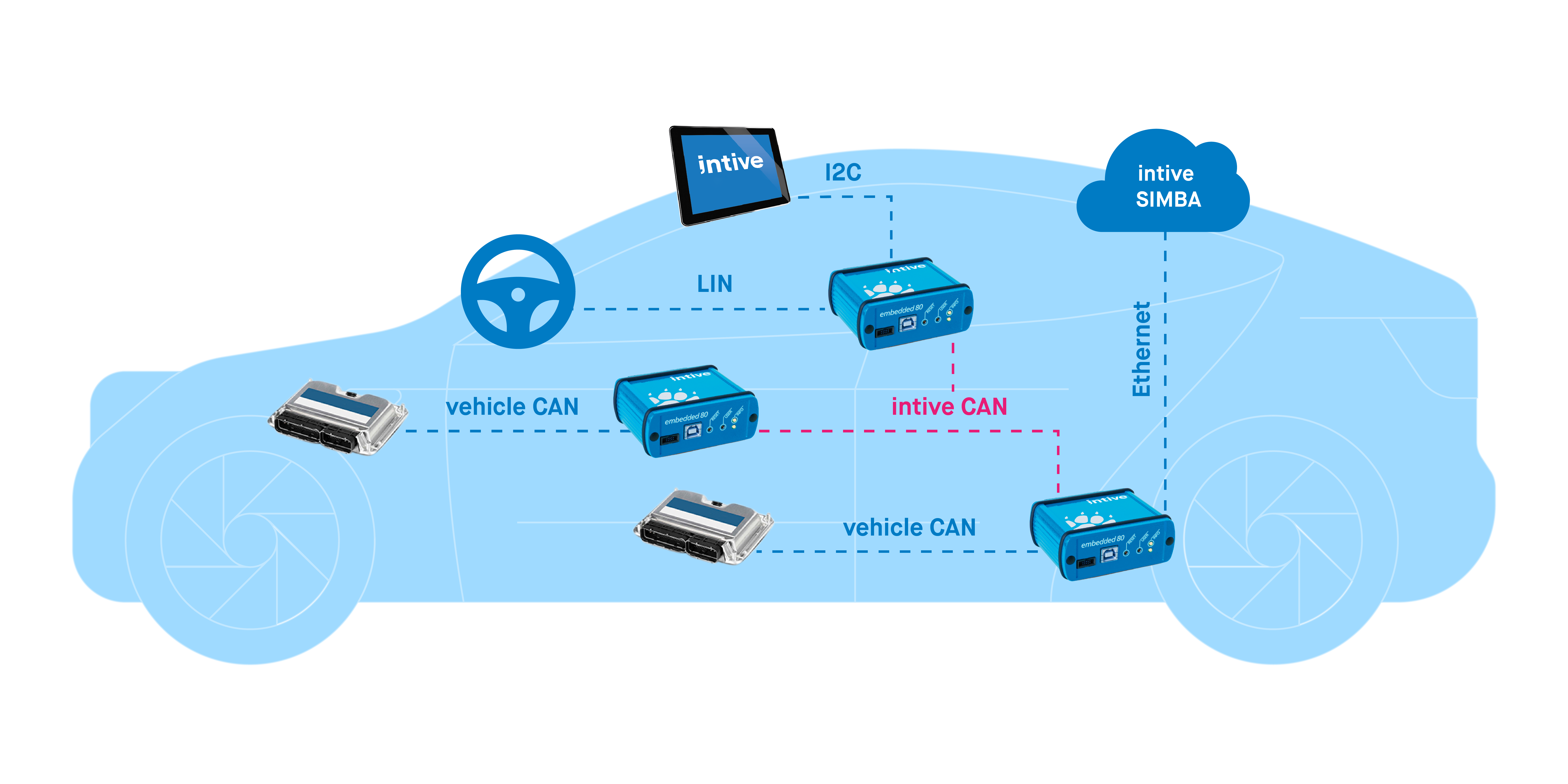//5 min
The automotive software market is growing at an impressive speed – predictions state that by 2030, it will have doubled in size to a total value of $80 billion. Yet despite the expansion, research from McKinsey shows that development productivity isn’t rising proportionately with the complexity of automotive software. This disconnect means that automotive players may not be able to innovate and keep up with competitors at the pace of new market demands.
At intive, we’ve bridged the gap using our unique SIMBA framework. The SIMBA framework – short for ‘SIMulations BAukasten’ in German, which translates to ‘simulation construction kit’ – is a collection of proven software libraries, ready-to-use applications, and sophisticated tooling to support in rapid application scenarios, especially in the automotive HMI context. In short, it speeds up development cycles and helps trial automotive concepts more quickly in the real world.
Here’s how SIMBA has been and will continue to fuel better productivity in automotive software development.
Accumulative building for faster cycles
Software development cycles in the automotive industry can be notoriously long, costing both time and money. The SIMBA framework, however, connects existing and stable components to new and experimental ones, so shortens cycles by enabling automotive players to build from a springboard (rather than from scratch).
SIMBA has libraries in multiple languages (for example, C#, Java, C++) that aid a fast, efficient connection setup to software under development. These libraries also cover commonly found challenges when developing user interfaces for several technologies, including Unity3D, Android, Angular, and WPF. Likewise, various, continuously-developed applications can serve as either background services or tools that aid automotive companies when developing new prototypes. And, because hardware components are integrated into the SIMBA framework, it establishes easy interaction with actual vehicle functions.
The ready-made nature of components within the framework means that even very basic prototypes can be linked to car functions, media backends, and many other provided components in a much shorter timeframe. The result is faster testing and realization of concepts in context.
Quality isn’t compromised in these shorter cycles either. SIMBA has been created by intive engineers with more than 15 years experience in the automotive sector. The libraries and tools in the framework have been gathered from the thousands of development cycles we have worked on, and refined along the way. The expertise of teams additionally ensures that code is thoroughly optimized, that SIMBA libraries are stable, and are applied according to client needs.

Innovation in the driver’s seat
The SIMBA framework empowers clients to realize new ideas by making concepts experienceable before they’re launched in cars. New features can be developed as needed within the framework, as well as can be reused in later prototypes. These prototypes also provide a basis to quickly evaluate new features or can be used in extensive studies (for instance, to gauge user sentiment or address safety concerns). Evidence and data points can then be conveyed to decision-makers in projects, and can be used to showcase that new features are successful and worthwhile.
Such agility allows automotive companies to enact informed innovation, and inch closer to constructing the cars of tomorrow.
Already, intive has utilized the SIMBA framework to swiftly build three HMI prototypes for a large German car manufacturer. These prototypes were based on different input method concepts (multiple touch displays, single touch display, non-touch with remote control) and were used as a basis for the management, including the board of directors, to decide the future concept of the manufacturer's infotainment systems.
The framework was equally applied to create a fully functioning Android Automotive prototype within less than three months and with a small team. The project included apps for multiple contexts spanning media and navigation, and controlling some of the car’s functions. Elsewhere, the framework has helped equip a prototype with a complex HMI system with multiple displays – realizing prototypical input devices that could control and adapt the car interior using several motors to simulate different setups while driving autonomously.
Keeping development in constant motion
intive always strives to support the best available technologies for prototyping HMI systems. Our entire team keeps track of developments in the space and is continuously looking for cutting-edge HMI tools to maintain momentum in software development and the automotive industry.
Android Automotive is a big trend at the moment, and intive has made integrating the SIMBA framework into Android Automotive a priority. Meanwhile, we’re focusing on using a distributed system approach and collaborating more deeply with AI teams to further integrate speech recognition and natural language processing in-car functionality.
Sustainability is a strong focus for both intive and the automotive space moving forward, and the SIMBA framework can be a powerful structure to shape greener software development. SIMBA currently saves energy because components can be reused in cycles; plus, visualizing concepts before they’re implemented in cars means fewer hardware resources are used. Therefore, SIMBA is primed to adapt and innovate with the next generation of smart, sustainable cars.
intive’s SIMBA framework makes sense in the modern automotive sphere. Not only does it save players time and money, it powers productivity and experimentation, and can be applied in the context of today, and the unfolding future of mobility.
Want to know more about the SIMBA framework and how it can change gears for your automotive software development? Speak with an intive expert.